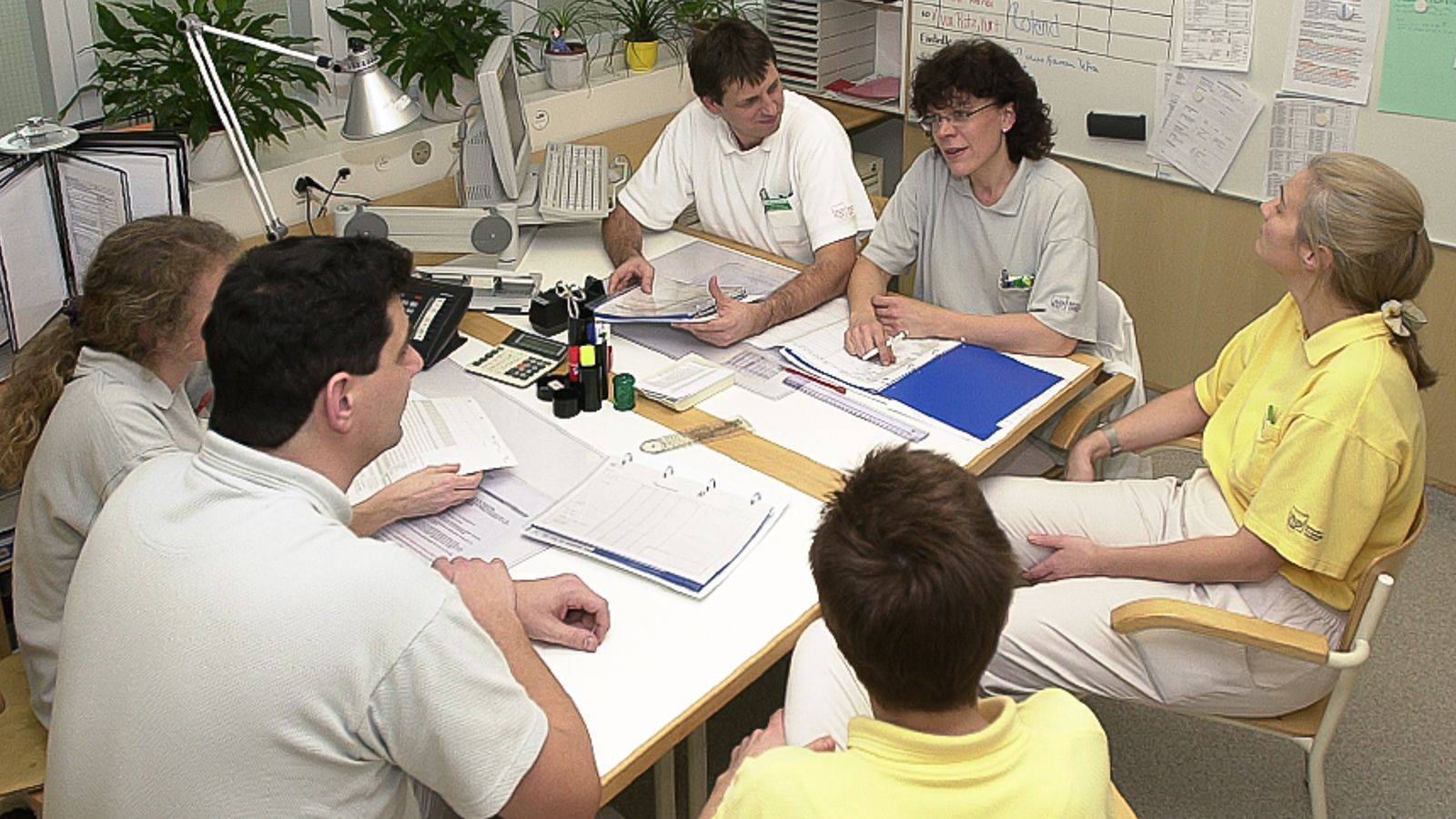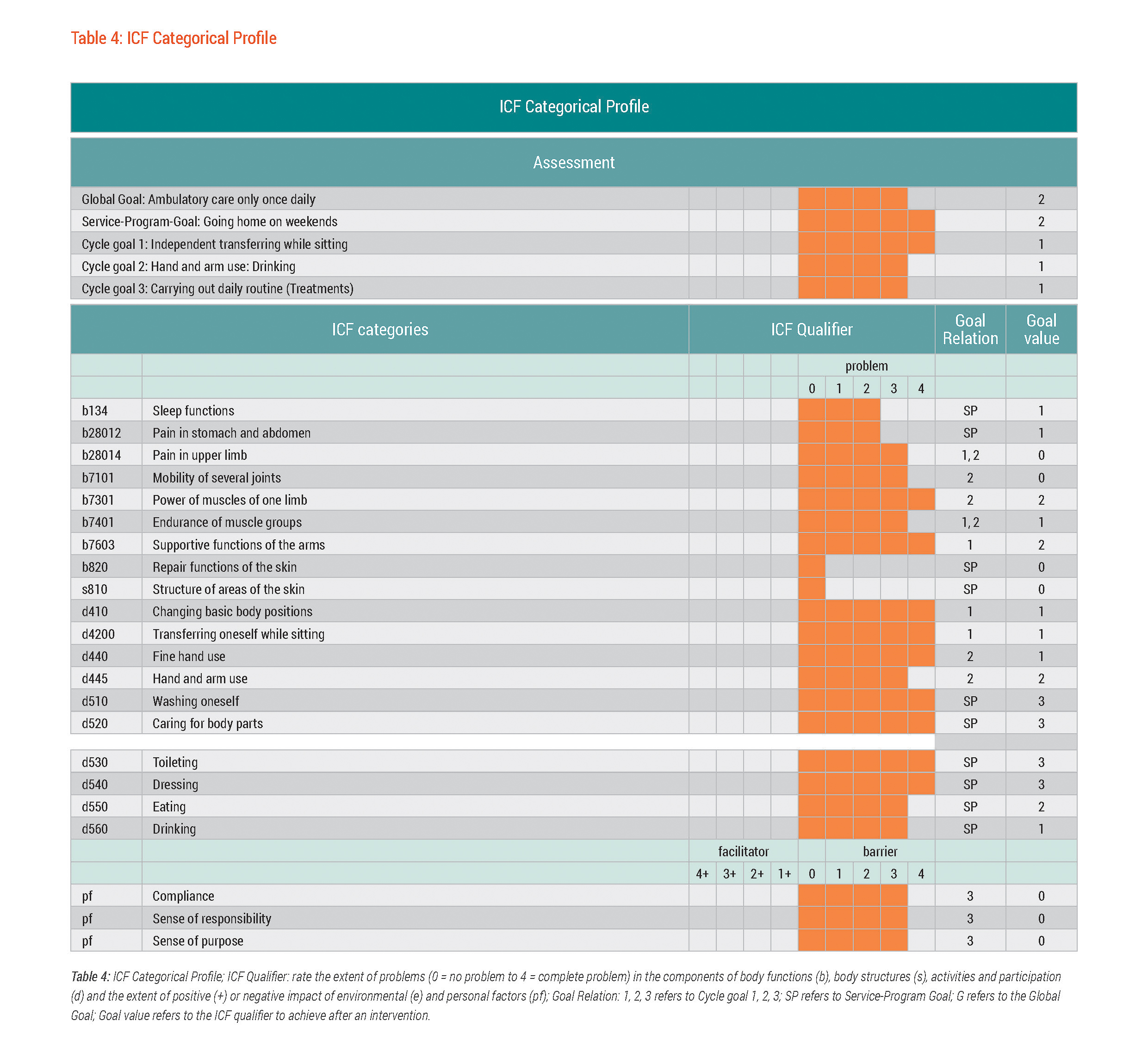Goal-setting/Determination of Intervention Targets

Goal-setting
Based on the assessment of Peter’s functioning status, as documented on the ICF Assessment Sheet, a profile of Peter’s functioning, or ICF Categorical Profile, was created using the standardized language of the International Classification of Functioning, Disability and Health (ICF). The ICF Categorical Profile for Peter visually depicts his functioning status at the time of the assessment using ICF qualifiers, and shows long and short-term goals that the rehabilitation team, with consideration of Peter's perspective, has identified. It was believed that clear and meaningful common goals would help to increase Peter’s intrinsic motivation and foster his feeling of responsibility toward the program.
For example, to address Peter's passive lifestyle, poor compliance, and the absence of a sense of responsibility and purpose, ‘carrying out daily routine’ was identified as one of the cycle goals.This required that Peter participate in all treatment sessions.
With Peter’s input, a 6-month global goal was set to reduce ambulatory care to once a day. The service-program goal that allowed Peter to fulfill his wish to go home on weekends was of some concern, since there was a possibility that it might compromise the potential positive outcomes of the surgery. Regardless, it was accepted with the premise that the cycle goals set, that is, the 'stepping stones' toward achieving the service-program goal, involved Peter and that he accepted "ownership" for these goals and shared the responsibility for his rehabilitative program.
""...the cycle goals set...involved Peter and that he accepted "ownership" for these goals shared responsibility for his rehabilitative program.""
The cycle goals included:
- Transferring oneself: Independent transfer to his wheelchair and car within 2 weeks
- Hand and arm use: Drinking with right arm
- Carrying out a daily routine: Participating in all treatment sessions
Determination of Intervention Targets
Once the cycle goals were established, the rehabilitation team identified which intervention targets were related to the cycle goal i.e. selected ICF categories that should be targeted for intervention. The team took into account those intervention targets that were most relevant to the cycle goal and that were modifiable. For example, b28014 Pain in upper limb, b7401 Endurance of muscle groups, b7603 Supportive functions of the arms, d410 Changing basic body positions, and d4200 Transferring oneself while sitting were all selected as intervention targets for cycle goal 1 – independent transferring while sitting i.e. Peter’s ability to transfer himself to his wheelchair and car. See table 4 for Peter's ICF Categorical Profile.
Table 4: ICF Categorical Profile; ICF Qualifier: rate the extent of problems (0 = no problem to 4 = complete problem) in the components of body functions (b), body structures (s), activities and participation (d) and the extent of positive (+) or negative impact of environmental (e) and personal factors (pf); Goal Relation: 1, 2, 3 refers to Cycle goal 1, 2, 3; SP refers to Service-Program Goal; G refers to the Global Goal; Goal value refers to the ICF qualifier to achieve after an intervention.
Improvement in these ICF categories or intervention targets were expected to lead to cycle goal achievement. The identification of the shared goals and corresponding intervention targets served as the central source of information for planning the interventions in the second Rehab-Cycle® of Peter's rehabilitation program.
